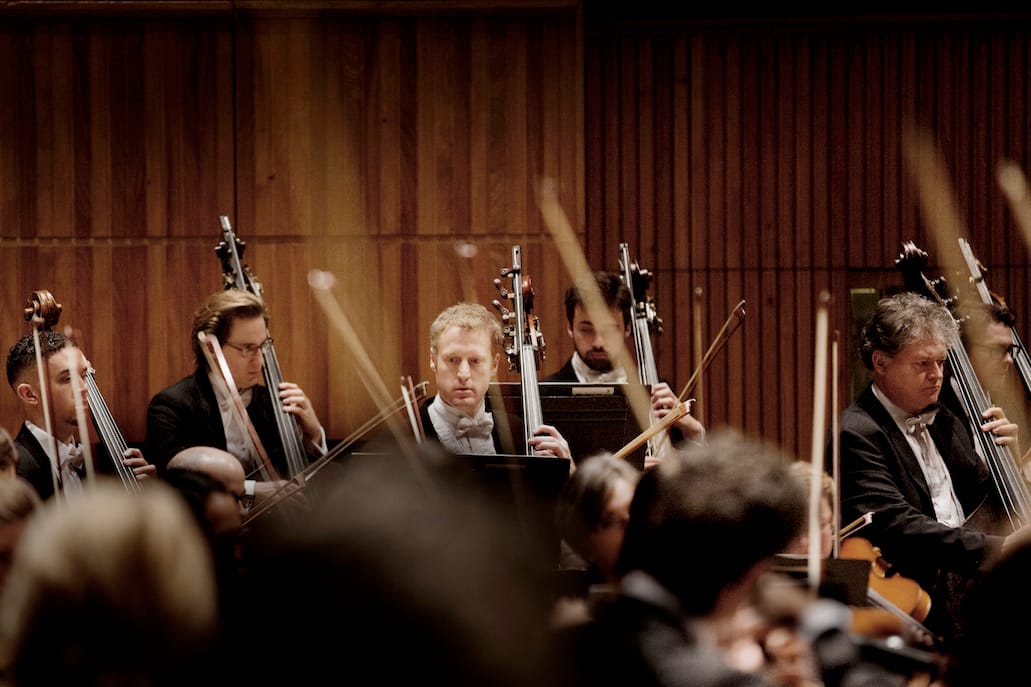The Philharmonia Experience

The Philharmonia Orchestra was founded in 1945 by Walter Legge. A self-governing orchestra since 1964, co-owned by its 80 members, has its digital projects at the fore-front. It is aimed towards wooing audiences to a live orchestra experience outside the concert hall. 2008 onwards, Esa-Pekka Salonen has been the principal conductor. He is also the artistic advisor of the Philharmonia Orchestra.
Earlier this month, in Serenade Magazine, I came across the interview of Urmila Devi Kotda Sangani, the Organising Secretary of International Music and Arts Society. I was thrilled to discover that the late Maharaja of Mysore, Sri Jayachamaraja Wadiyar, apart from being a pianist and a patron and lover of Western classical music, was also the first president of the Philharmonia Concert Society, London in 1948.
Here, I choose to reflect on the experiences of the two concert renditions by the orchestra which I saw during my visit to London.
November 24th 2016
Bela Bartok Violin Concerto 2
Dmitri Shostakovich Symphony No. 8 in C minor, Op 65
Frank Peter Zimmerman played earnestly and enthusiastically. He adapted to the challenges of piece with ease, offering vibrant interactions with the orchestra.
Both the works are marked with immense passion but are not conventionally beautiful. Conductor Juraj Valčuha fleshed out the details and variations effortlessly to an extent. In Bartok’s Violin Concerto, the rhythm of the piece emerged as the most important aspect to me. The trombone section shone brilliantly. While the harp beginning was fresh, a constant urgency throughout the first movement was sustained by the cello and double bass section alongside the trombones and the bassoons. The second movement was slow only to be accompanied by a brief moment of steadfastness. The third movement managed to incorporate inspirational tones. Overall, there was a surge of emotions rooted to a bucolic feel. It reminded me of a circus scene with many tricks and merriment underscored by certain grim, quieter phases.
Frank Peter Zimmerman’s encore, Rachmaninov in B minor had an intense, almost aggressive interpretation. It had shadows of dispersed sentiments.
Shostakovich’s Symphony No 8 was akin to a drama recalling the tragedy of the war. The beginning was almost immaculate. Certain instruments like the Piccolo, Clarinet, trumpet, trombone, cello and oboe stood out during the five movements. The mournful call on cor anglais by Jill Crowther, captured the anguish.
Despite its piercing tone, the piccolo brought forth a touch of humour in the third movement specifically. In the same movement, the ostinato by the violas was executed with perfection. The drums and the timpani produced grand yet controlled sounds. The violin strokes helped in the overall narration. There was constant support by the cello and the double bass. While the flutes spoke of the gentleness, the oboes spoke of the desolation. The animated yet frightening component was expressed through trumpets, piccolo and clarinets. The final movement was portrayed as written- a nebulous feel rather than Shostakovich’s idea of triumph.
1st December 2016
Vaughan Williams Fantasia on a Theme by Thomas Tallis
Ravel Piano Concerto in G
Walton Symphony No. 1
Ravel’s Piano Concerto in G is one of my personal favourites. I quite enjoyed the glitzy, youthful interpretation by Francesco Piemontesi. The flamboyance wasn’t sustained till the end but in adagio assai, Piemontesi demonstrated the perfect pace and agility.
In the overture, Fantasia on a Theme of Tallis, perhaps chosen to show the difference in approach adopted by Ravel’s student, Yukiko Ogura’s whacky manner of playing the viola stood out. The warm sound of the Philharmonia strings somewhat lent us a peek into the imagination of Vaughan Williams.
Walton’s Symphony was given a candid treatment by Collon with exact directions but a vicious feel. The ruthless double bass put the hurtful sentiment in place. The second movement saw the woodwind displaying their fury in full swing. This was followed by a slow movement interjected with inward melancholy. The ending was exuberant and triumphant with jazzy motifs on strings and boisterous touch of the trombones and trumpets along with the triumphant sounds of the timpani.





